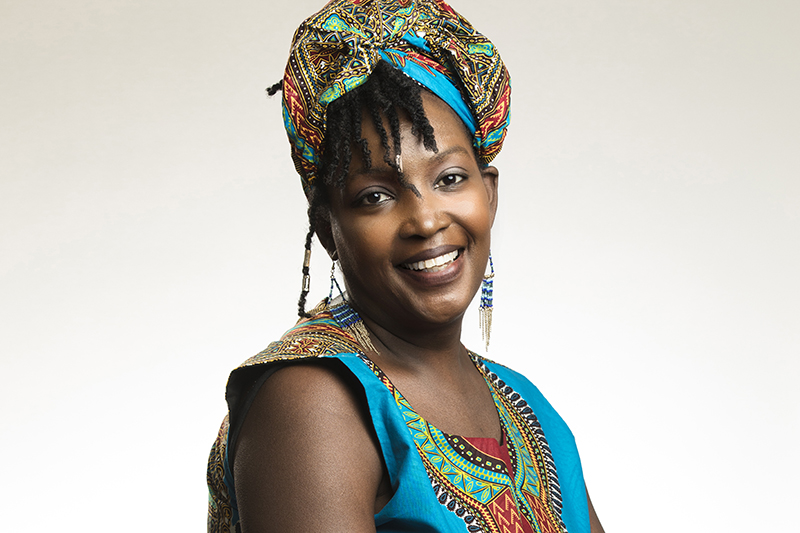Idea: The History Bike Project offers “ride-by” hyperlocal history for communities in Philadelphia.
Primary artistic medium: multidisciplinary
Biography
Gigi McGraw is a social practice artist, actress, and writer who coined the term PhilHERstorian to describe her invested interest in the cultural and historical preservation of Philadelphia. With a Master’s Degree in theater from Villanova University she currently resides in Philadelphia, Pennsylvania. Gigi strongly believes that social artistry is a powerful way to push art beyond the mere aesthetics and for it to be used as a vehicle for change. Gigi is fascinated with the life stories of individuals and is inspired by projects such as the Federal Writers’ Project of the 1930’s, which recorded the narratives of the formerly enslaved. She is also an advocate for hyperlocal history projects. Gigi documents life through recorded testimony, exhibits, print, and creative missions locally and abroad.
My teaching experience in the arts and in academia is with the University City Arts League as a Creative Dramatics Instructor, Freedom Theater- an Acting Teacher, R.W. Brown Community Center- a Drama Specialist. Caring People Alliance- an interim Kindergarten Teacher, The School District of Philadelphia- Long-term Substitute Teacher. Please Touch Museum- Manager of Community Programs, and the Free Library of Philadelphia- Manager of Community Outreach/ Read By 4th. As an actress and writer I performed in several self-written performances as listed: “Close talkers, Mental Illness and Other Red Flags”- Theater Mélange, “Sodom’s Daughters” – Shubin Theater, “3-D: Dramatizing Dress Through Dance-A Play on Wardrobe”- New York University (Kimmel Hall) ,“My Entire Short Life…So Far”- The Rotunda 2019 / Old Academy Players 2021 , “G-Ma’s Living Room”- An interactive exhibit with narration 2017 (The Painted Bride)
In my craft I’ve published essays, books, plays and interactive exhibits:
- Sodom’s Daughters: The Removed and Forgotten Black Female of Punk Culture (Women & Performance: A Journal of Feminist Theory- New York University, 2012)
- G-Ma: Stories and Photos of Black Grandmothers (Self-published)
- The Nursery: The Story of Pouponniere Et Foyer, Senegalese Orphanage: A Photo & Coloring Book (Self-published)
- Stories of Grave Importance: The Mt. Moriah Cemetery Series
- Letters to Aunt Hattie- A play for Votes for Women 2020
- Sojourner at the White House (Co-written with R. Petersen)
I’ve also created festivals and special shows:
- Women Can Do Festival- 2018
- Sassy Sadie’s Storytime for Adults- 2019-present
- Neighborhood Story Banner Project – 2021-present
- The Thing About Philly- 2022-present
EDUCATION
Villanova University MA Theatre
Lincoln University BA English
Project Description
The History Bike Project engages the community with hyperlocal history presented in a very portable way. Using a cargo bike, stocked with history cards and dramatic props, the history bike facilitator/rider travels preselected neighborhoods in Philadelphia dispensing historical and cultural facts, in a safe, yet creative way.
The emphasis is on hyper local history which focuses on community related information that may not be widely known of outside of that particular location. However, if a bike stop takes place in front of a well-documented, former venue or is about an extensively researched political or cultural figure of yesteryear– that is not overlooked.
At each designated stop the rider will share information in an engaging manner employing dramatic storytelling. Spectators are encouraged to interact after and even during presentations- where they get to ask questions, join in on chants, answer trivia and give cheers or donations which will always be welcomed- but not encouraged. After each “show” history cards with all of the route stops, for that community, will be handed out. Participants can travel to the next stop or not. There will be fliers available with the dates and times of the next history ride-by and of other history bike tours in different communities. Tour stop presentations will run 15 to 20 minutes each. Fortunately, being outdoors will allow for the proper social spacing recommended to prohibit the spread of Covid-19.
The history bike should be painted in eye-catching, vibrant colors in order to capture the attention of passersbys. If there are inquires by the public, prior to a designated bike stop, the facilitator would be able to hand out the history cards created for that specific route. Interested guests would know where the next official stop was if they wished to see the presentation. As previously stated, each stop offers a short dramatization or creative storytelling moment. The facilitator connects with the audience by using pictures, props, and written anecdotes for reading, which are stored in the cargo space of the bike, these accoutrements serve to support the research and enhance the overall experience. In reality, the history bike rider is not only a facilitator sharing facts, but becomes a hybrid performance artist and museum curator presenting social history directly on the spot where the history occurred.
Bike routes range in distance from 0.5 miles to 3 miles. Riders will make stops at store fronts, park spaces and other communal dwellings. Typically a tour would have 5 to 10 stops depending on the length of the route. As the creator of the project I would be the chief facilitator/rider, but it is my hope that as this evolves and gain traction I could hire others to share the tours.
My long-term wish is that the history bike project becomes a tractable model for community engagement and local history preservation. If funded, in the not too distant future, with financial support, I would like to purchase more bikes and market the project to other places in the tristate area.





